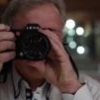Are Leica sensors made for Leica lenses?
-
Recently Browsing 0 members
- No registered users viewing this page.
-
Similar Content
-
- 8 replies
- 841 views
-
- 10 replies
- 1,121 views
-
- 15 replies
- 2,400 views
-
- 43 replies
- 4,777 views
-
- 1 reply
- 1,068 views
-





Recommended Posts
Join the conversation
You can post now and register later. If you have an account, sign in now to post with your account.
Note: Your post will require moderator approval before it will be visible.